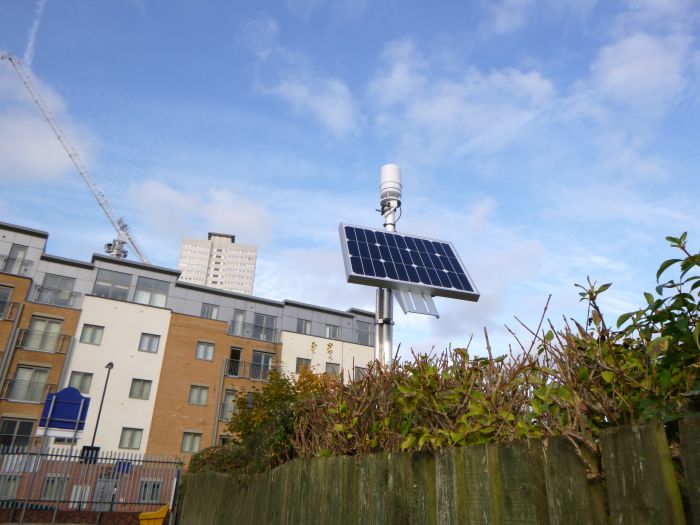





Summary
Problem
The University of Birmingham had set up and was operating 26 weather stations across the city to serve as education portals and monitoring stations for the population of Birmingham. Over time and after years of use, these stations had fallen into disrepair and were not delivering the required data. The systems needed modernizing, upgrading, and servicing to bring them up to standard and ensure they continued to deliver value to the city.
Located in various locations—including primary schools, university grounds, nature reserves, and housing estates—servicing created a challenge as no two sites were the same. Some stations were missing enclosures, and servicing had been intermittent on some critical components, causing failures and lack of data.
Solution
Campbell Scientific worked with the University of Birmingham to upgrade 26 weather stations at numerous locations across Birmingham with brand-new ClimaVue™50 digital sensors, larger SP30 solar panels to provide surety of power supply, and CELL215 upgraded communications options. The ClimaVue 50 measures all common meteorological parameters, the SP30 offers increased power capacity, and the CELL215 provides reliable connectivity to future-proof data flow. The stations monitor the climate conditions across the city, supplying the university with a robust record of data collected over time. Where the systems are installed on school sites, the data is delivered to kiosks for use in local educational programs.
Realized benefits
The robust systems supplied the customer with reliable data to be able to monitor ongoing weather conditions and change over time. Data was also delivered to kiosks near school locations for use in local educational programs.
System Upgrades and New Configurations
Sensor: ClimaVue 50
The ClimaVue 50 is an affordable, all-in-one meteorological sensor that replaced the old WTX520 sensors across 26 sites. The ClimaVue 50 is an SDI-12, lower-power sensor that measures many of the most common meteorological measurements, including air temperature, relative humidity, vapor pressure, barometric pressure, wind (speed, gust, and direction), solar radiation, precipitation, and lightning strike (count and distance).
Data Acquisition: CR1000 and CR800
There were two Campbell Scientific data logger options included in the weather stations: the CR1000 for the more complex stations and the CR800 for smaller and more remote stations. Both data loggers are more powerful and robust, and ideal for remote and long-term monitoring stations.
Communications: CELL215
A new CELL215 cellular modem was introduced to all sites to offer more reliable cellular connectivity across locations without the need for ongoing, costly maintenance visits.
Power Supply: SP30
All batteries were swapped out, and the solar panels were replaced with new and more powerful SP30 variants. Battery capacity was increased during the change to ensure uninterrupted data transmission—whatever the weather.
Data Visualization and Access: Konect GDS
Konect GDS was supplied to help visualize the data from the stations. Konect is an easy-to-use and easily configured Cloud-based software solution that provides access to data with any Internet-enabled device. Data is delivered via Konect to kiosks (screens) in each school facility to enable real-time, onsite data access to facilitate learning.
Deliverables
Through the station upgrades, Campbell Scientific brought the network across Birmingham back up to full capacity. By installing our ClimaVue 50, all the common meteorological measurements required were provided in a simple, all-in-one digital sensor, which further simplified installations and ongoing maintenance and operations for the university.
The upgraded CELL215 modems, in addition to improved cellular coverage across the area, provided more reliable data collection. Moreover, Konect GDS allowed the user to easily visualize and digest the data. Many of the stations were set up near schools. The touchscreen kiosks supplied to the University of Birmingham gave students live access to the meteorological data.
The upgraded sites are not only supplying valuable urban climate data to the University of Birmingham across multiple city locations, but also educational opportunities to school children across the city.